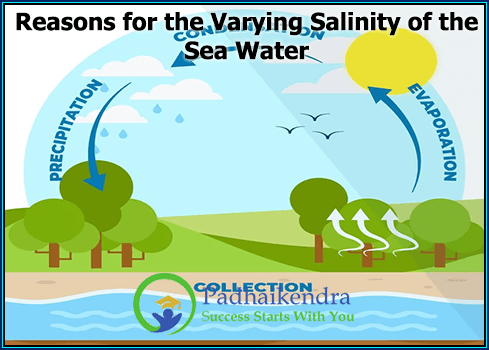The salinity of seawater can vary due to several factors, including:
- Evaporation and Precipitation: When seawater evaporates, the salts and other dissolved substances are left behind, causing the remaining water to become more saline. Conversely, when precipitation occurs, it dilutes the seawater and decreases its salinity.
- Runoff and River Inputs: Freshwater runoff from rivers and other sources can also dilute seawater and decrease its salinity, especially in areas close to the coast.
- Ice Formation and Melting: When seawater freezes, it leaves behind the dissolved salts, making the remaining water more saline. Conversely, when ice melts, it can add fresh water to the ocean and decrease its salinity.
- Ocean Currents: Ocean currents can transport water with different salinities from one region to another, leading to differences in salinity across different parts of the ocean.
- Upwelling and Mixing: Upwelling of deeper water to the surface can bring water with different salinities to the surface, leading to localized variations in salinity. Similarly, mixing of water masses with different salinities can also lead to changes in salinity.
Overall, the varying salinity of seawater is an important factor in ocean circulation, marine ecosystems, and the global climate system. Understanding the factors that influence salinity can help us better understand and predict changes in the ocean and its impact on the planet.





